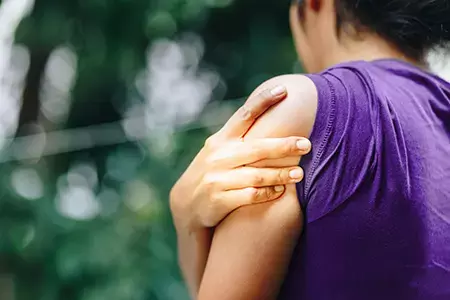- Home
- Medical news & Guidelines
- Anesthesiology
- Cardiology and CTVS
- Critical Care
- Dentistry
- Dermatology
- Diabetes and Endocrinology
- ENT
- Gastroenterology
- Medicine
- Nephrology
- Neurology
- Obstretics-Gynaecology
- Oncology
- Ophthalmology
- Orthopaedics
- Pediatrics-Neonatology
- Psychiatry
- Pulmonology
- Radiology
- Surgery
- Urology
- Laboratory Medicine
- Diet
- Nursing
- Paramedical
- Physiotherapy
- Health news
- Fact Check
- Bone Health Fact Check
- Brain Health Fact Check
- Cancer Related Fact Check
- Child Care Fact Check
- Dental and oral health fact check
- Diabetes and metabolic health fact check
- Diet and Nutrition Fact Check
- Eye and ENT Care Fact Check
- Fitness fact check
- Gut health fact check
- Heart health fact check
- Kidney health fact check
- Medical education fact check
- Men's health fact check
- Respiratory fact check
- Skin and hair care fact check
- Vaccine and Immunization fact check
- Women's health fact check
- AYUSH
- State News
- Andaman and Nicobar Islands
- Andhra Pradesh
- Arunachal Pradesh
- Assam
- Bihar
- Chandigarh
- Chattisgarh
- Dadra and Nagar Haveli
- Daman and Diu
- Delhi
- Goa
- Gujarat
- Haryana
- Himachal Pradesh
- Jammu & Kashmir
- Jharkhand
- Karnataka
- Kerala
- Ladakh
- Lakshadweep
- Madhya Pradesh
- Maharashtra
- Manipur
- Meghalaya
- Mizoram
- Nagaland
- Odisha
- Puducherry
- Punjab
- Rajasthan
- Sikkim
- Tamil Nadu
- Telangana
- Tripura
- Uttar Pradesh
- Uttrakhand
- West Bengal
- Medical Education
- Industry
Arthroscopic subscapular sling procedure tied to low recurrent shoulder instability at 24 months follow-up: study

The arthroscopic subscapular sling for anterior shoulder instability has been developed after many years of cadaveric testing, biomechanical robot measurements, and improvements and enhancements of the surgical technique. The procedure stabilizes the shoulder with a semitendinosus tendon graft that reconstructs the torn labrum and provides a sling suspension around the subscapularis tendon. It provides both dynamic and static stability with the sling around the subscapularis tendon and the reconstruction of the anterior labrum.
Jan Arild Klungsøyr et al conducted a study to analyze the results of the subscapular sling procedure developed for anterior shoulder instability in patients with less than 10% anterior glenoid bone loss.
Patients were treated surgically with the arthroscopic subscapular sling procedure. A semitendinosus graft was used to reconstruct the anterior labrum and to establish a sling suspension around the upper part of the subscapularis tendon. The patients were followed up with radiographs (at 12 and 24 months). Magnetic resonance imaging (MRI) of the shoulder region and clinical examinations were performed at 3, 12, and 24 months. Recurrent dislocation was the primary endpoint. The Western Ontario Shoulder Instability Index (WOSI) and MRI results were secondary outcome measures. An independent physiotherapist assessed residual instability and range of motion.
Key findings of the study were:
• Fifteen patients were included with a dislocation rate of 0% after 24 months follow-up.
• There was a significant clinical improvement of the WOSI score from 57% (904) at baseline to 88% (241) at 24 months (P < .001).
• The proportion of patients with an improvement in the WOSI Total score larger than the estimated minimal clinically important difference was 100% both at 12 and 24 months.
• MRI showed an intact sling in all patients.
• External rotation was not significantly reduced (52 deg at baseline vs 47deg at 24 months, P = .211).
• Flexion and abduction were significantly improved from 152deg to 174deg (P = .001) and 141deg to 170deg (P < .001) after 24 months.
• The surgical procedures were completed without any intraoperative complications.
The authors concluded that – “The subscapular sling procedure resulted in low recurrent shoulder instability and improved patient-reported outcome measures at 24 months of follow-up.”
Level of Evidence: Level IV, case series.
Further reading:
The Arthroscopic Subscapular Sling Procedure Results in Low Recurrent Anterior Shoulder Instability at 24 Months of Follow-Up Jan Arild Klungsøyr et al Arthroscopy: The Journal of Arthroscopic and Related Surgery https://doi.org/10.1016/j.arthro.2024.02.032
MBBS, Dip. Ortho, DNB ortho, MNAMS
Dr Supreeth D R (MBBS, Dip. Ortho, DNB ortho, MNAMS) is a practicing orthopedician with interest in medical research and publishing articles. He completed MBBS from mysore medical college, dip ortho from Trivandrum medical college and sec. DNB from Manipal Hospital, Bengaluru. He has expirence of 7years in the field of orthopedics. He has presented scientific papers & posters in various state, national and international conferences. His interest in writing articles lead the way to join medical dialogues. He can be contacted at editorial@medicaldialogues.in.


